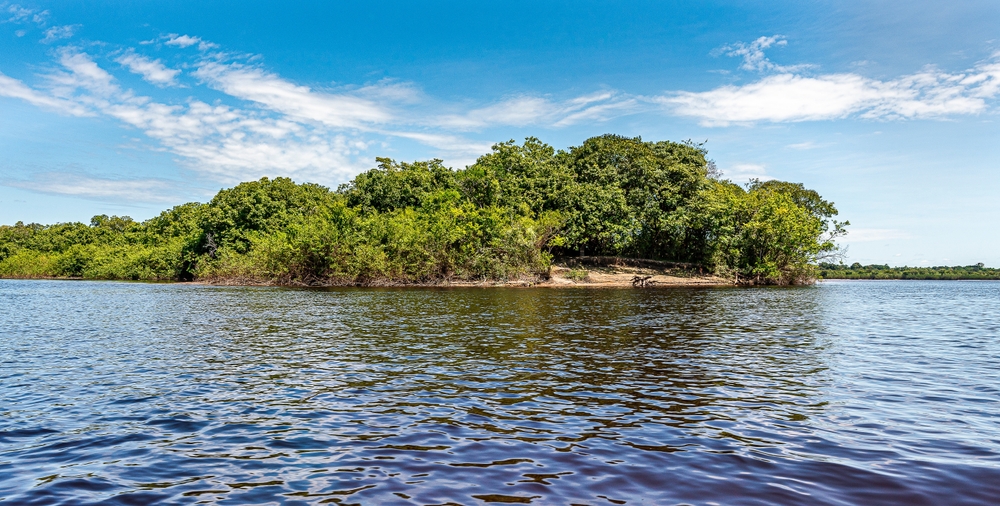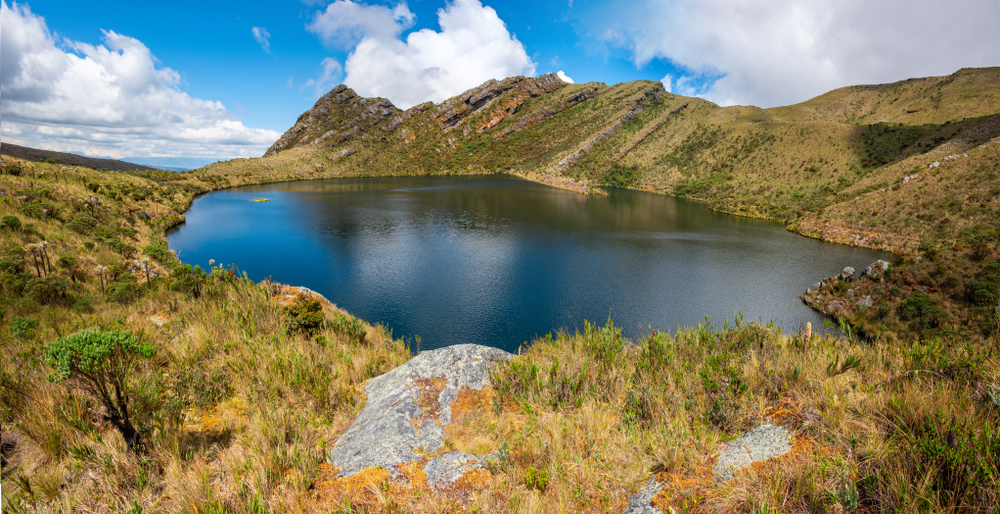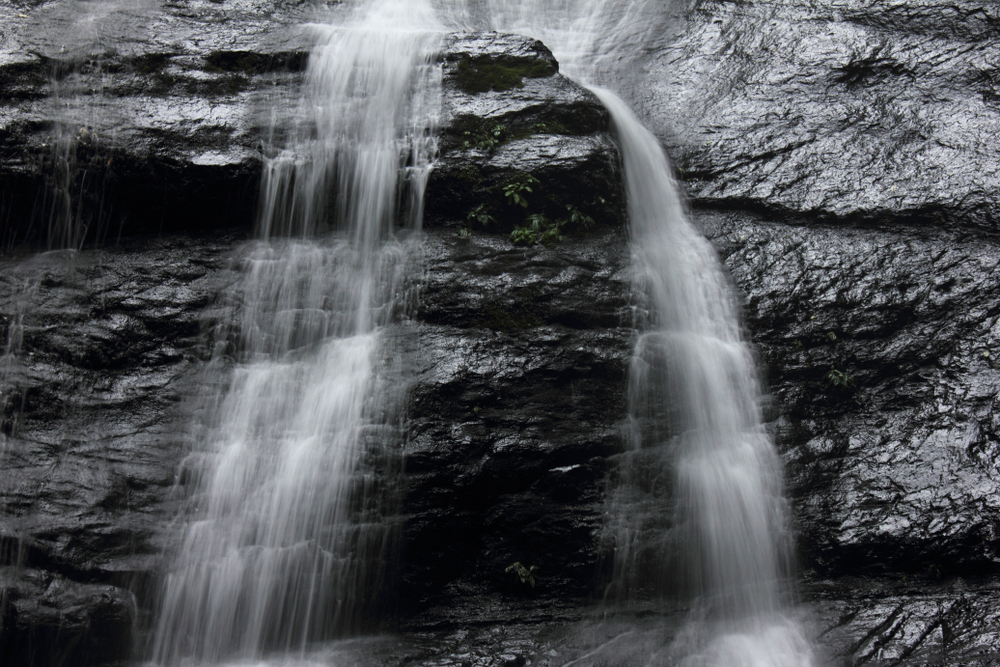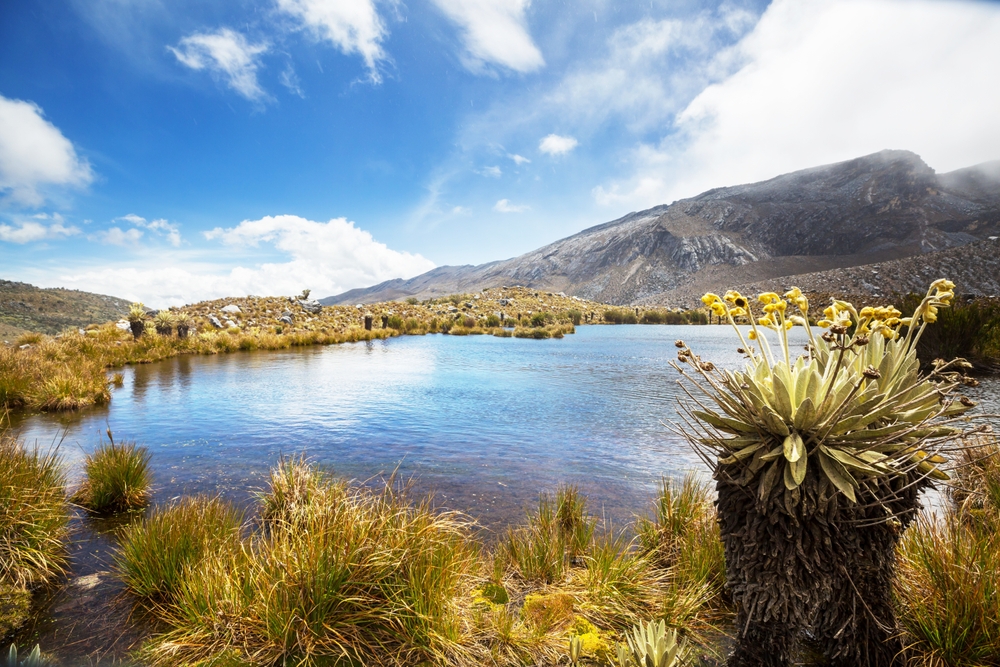El Tuparro Overview
El Tuparro National Park, known locally as Parque Nacional Natural El Tuparro, is a vast protected area located in the eastern plains of Colombia, within the department of Vichada.
Spanning approximately 2,117 square miles (5,690 square kilometers), the park lies along the Orinoco River Basin, near the border with Venezuela. The landscape is characterized by an impressive mix of savannas, gallery forests, rocky outcrops, and winding rivers, creating a unique environment that blends tropical forest and open plains.
One of its most striking natural features is the Raudal de Maipures, a breathtaking set of rapids once described by naturalist Alexander von Humboldt as one of the world’s most beautiful landscapes. The park’s terrain is also interspersed with granitic rock formations, forming hills and plateaus that contrast with the surrounding grasslands. The Tuparro and Tomo Rivers further enhance the park’s scenic beauty, offering clear waters that weave through the dense vegetation and rocky outcroppings.
El Tuparro National Park is home to a rich diversity of wildlife, reflecting the ecological wealth of the Orinoco region. Large mammals such as jaguars, pumas, ocelots, tapirs, and giant anteaters roam through the park’s forests and savannas. The rivers and wetlands provide habitat for species like capybaras, giant otters, and Orinoco crocodiles, while various species of monkeys, including howler monkeys and capuchins, can be spotted in the tree canopies.
The birdlife is equally impressive, with over 320 recorded species, making the park a paradise for birdwatchers. Visitors may encounter scarlet macaws, hoatzins, harpy eagles, and Orinoco geese, alongside many other colorful and rare species that thrive in this remote ecosystem.
One of the park’s most famous features is the Raudal de Maipures, a massive and powerful set of rapids where the Orinoco River crashes against ancient granite formations, creating a spectacle of whitewater and mist. This site is a major draw for visitors and has been recognized as a natural wonder of Colombia.
The park’s rivers and waterways offer opportunities for exploration by canoe or kayak, allowing visitors to immerse themselves in the pristine landscapes and observe wildlife along the shores. Hiking through the savannas and rocky outcrops provides a chance to witness panoramic views of the park’s rugged beauty, while guided tours led by indigenous communities offer insights into the region’s rich cultural and ecological heritage.
Despite its remoteness, El Tuparro faces conservation challenges, particularly from illegal mining, deforestation, and poaching, which threaten its delicate ecosystems. However, efforts by Colombia’s National Parks authority, along with conservation organizations, have helped mitigate some of these threats.
Strict regulations on tourism and resource extraction have contributed to the park’s preservation, and ongoing conservation programs aim to protect its biodiversity while involving local communities in sustainable initiatives.
The park remains one of Colombia’s most untouched and pristine wilderness areas, offering visitors an unparalleled experience in one of South America’s most ecologically significant landscapes.















































































